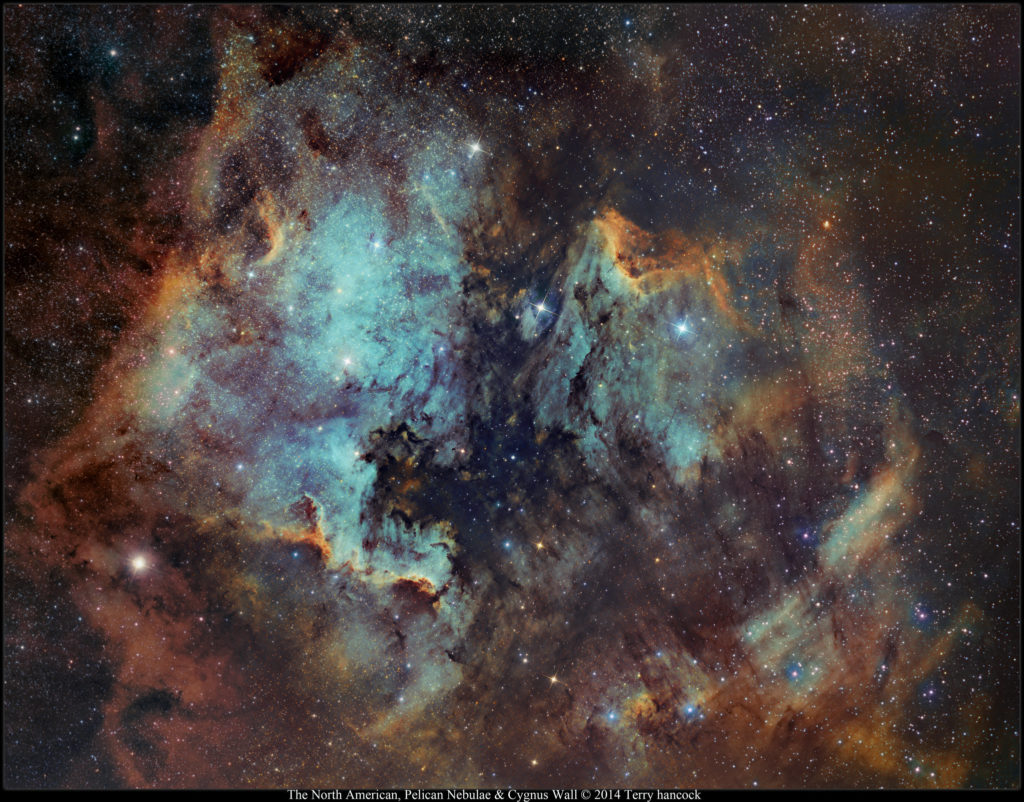
Like many constellations along the arc of the Milky Way, the constellation Cygnus harbors an embarrassment of celestial riches. There’s everything here: emission nebula, supernova remnants, open star clusters, star clouds, and dark nebulae that reach like intertwined fingers over the bright and unresolved star clouds in this part of the sky. In dark sky, with a pair of binoculars or wide-field telescope, a contemplative stargazer can spend many happy hours hopping from object to object, wondering why more people turn their eyes skyward more often.
Which is what I was doing on a cool northern autumn night as I toured the celestial Swan, looking for a handful of pretty emission nebulae that radiate a deep red light and stand out along the rich star field in this part of the sky. These nebulae make ideal targets for urban stargazers like me because their contrast is readily enhanced with a good light pollution filter which passes their emission while reducing the effect of urban light pollution. The nebula doesn’t appear brighter, but it does have better contrast against fish-grey urban and suburban skies [Read more…] about Nebula Hopping in the Constellation Cygnus
Share This:
